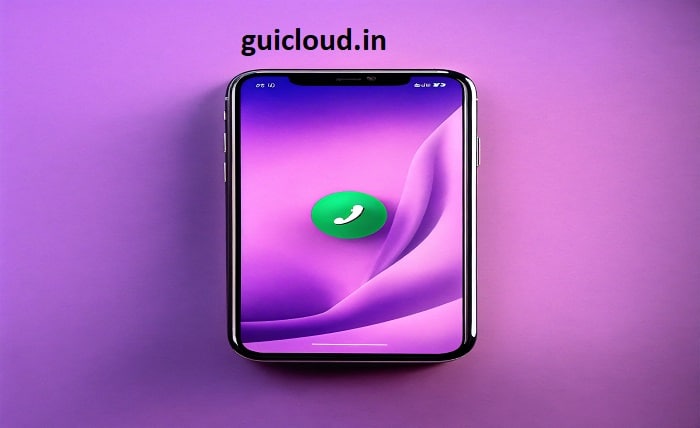How to Transfer Data from iPhone to iPhone with iCloud: A Step-by-Step Guide

Transferring data from iPhone to iPhone with iCloud is a convenient and efficient way to ensure all your important information, settings, and apps are seamlessly moved to your new device. Whether you’re upgrading to the latest model or replacing a lost or damaged phone, using iCloud to transfer data from iPhone to iPhone is straightforward and secure. This guide will walk you through each step of the process.
Why Use iCloud to Transfer Data?
Using iCloud to transfer data from iPhone to iPhone offers several advantages. It ensures that all your information, including photos, contacts, apps, and settings, is backed up and ready to be restored to your new device. Additionally, iCloud is integrated into iOS, making the process simple and user-friendly. By transferring data from iPhone to iPhone with iCloud, you can also avoid the need for physical cables or third-party software.
Preparing for the Transfer
Before you start the process of transferring data from iPhone to iPhone with iCloud, ensure that both devices are connected to a stable Wi-Fi network and have enough battery life. You should also check that you have enough iCloud storage to back up your data. If necessary, you can purchase additional iCloud storage from Apple.
Step 1: Backup Your Old iPhone to iCloud
The first step in transferring data from iPhone to iPhone with iCloud is to create a backup of your old iPhone. To do this, go to Settings > [your name] > iCloud > iCloud Backup, then tap “Back Up Now.” Ensure that your device remains connected to Wi-Fi until the backup process is complete. This backup will include all your apps, settings, and data, making it ready for transfer to your new iPhone.
Step 2: Turn on Your New iPhone
Once you’ve backed up your old iPhone, it’s time to set up your new device. Turn on your new iPhone and follow the on-screen instructions until you reach the “Apps & Data” screen. Here, you’ll choose the option to restore from an iCloud backup. This is a crucial step in the process of transferring data from iPhone to iPhone with iCloud.
Step 3: Sign in to iCloud
To restore your new iPhone from the iCloud backup, you’ll need to sign in with your Apple ID and password. This will give your new iPhone access to the iCloud backup you created earlier. Make sure you use the same Apple ID that you used on your old iPhone to ensure all your data is transferred correctly.
Step 4: Choose the Latest Backup
After signing in to iCloud, you’ll see a list of backups associated with your Apple ID. Select the most recent backup of your old iPhone. This step is critical to ensure that all your latest data is transferred to your new iPhone. The transfer process will begin once you select the backup.
Step 5: Wait for the Transfer to Complete
The time it takes to transfer data from iPhone to iPhone with iCloud depends on the size of your backup and the speed of your Wi-Fi connection. During this process, it’s essential to keep your new iPhone connected to Wi-Fi and plugged into a power source. Your new iPhone will restart several times as it restores your data, apps, and settings.
Step 6: Complete the Setup Process
Once the transfer is complete, your new iPhone will guide you through the remaining setup steps. You may need to re-enter your Apple ID password, set up Face ID or Touch ID, and configure other settings. This ensures that your new iPhone is fully customized to your preferences, completing the process of transferring data from iPhone to iPhone with iCloud.
Troubleshooting Common Issues
While transferring data from iPhone to iPhone with iCloud is generally smooth, you might encounter some issues. Common problems include insufficient iCloud storage, Wi-Fi connectivity issues, or incomplete backups. Ensure that your iCloud storage is adequate and that your Wi-Fi connection is stable. If problems persist, you may need to restart the process or contact Apple Support for assistance.
Benefits of Using iCloud for Data Transfer
Using iCloud to transfer data from iPhone to iPhone offers numerous benefits. It’s a wireless, hassle-free method that doesn’t require physical connections or additional software. iCloud also provides a secure way to store and transfer your data, ensuring that your information is protected throughout the process. Moreover, using iCloud allows for continuous backups, keeping your data safe even after the initial transfer.
Conclusion
Transferring data from iPhone to iPhone with iCloud is an efficient and reliable way to ensure all your important information is seamlessly moved to your new device. By following the steps outlined in this guide, you can enjoy a smooth transition and have your new iPhone up and running with all your apps, settings, and data intact. Whether you’re upgrading or replacing your iPhone, using iCloud simplifies the process and provides peace of mind.
FAQ
Q1: How long does it take to transfer data from iPhone to iPhone with iCloud?
A1: The time required to transfer data from iPhone to iPhone with iCloud depends on the size of your backup and your Wi-Fi speed. It can range from a few minutes to several hours.
Q2: Do I need to keep my old iPhone during the transfer process?
A2: Yes, you need your old iPhone to create the iCloud backup. Once the backup is complete, you can proceed with transferring data to your new iPhone.
Q3: What happens if my new iPhone runs out of battery during the transfer?
A3: If your new iPhone runs out of battery during the transfer, you can recharge it and restart the process. The transfer will resume from where it left off.
Q4: Can I use my new iPhone while the data is being transferred?
A4: It’s best to avoid using your new iPhone while data is being transferred to ensure the process completes without interruptions.
Q5: Is my data secure when transferring via iCloud?
A5: Yes, iCloud uses encryption to protect your data during transfer, ensuring that your information remains secure.




